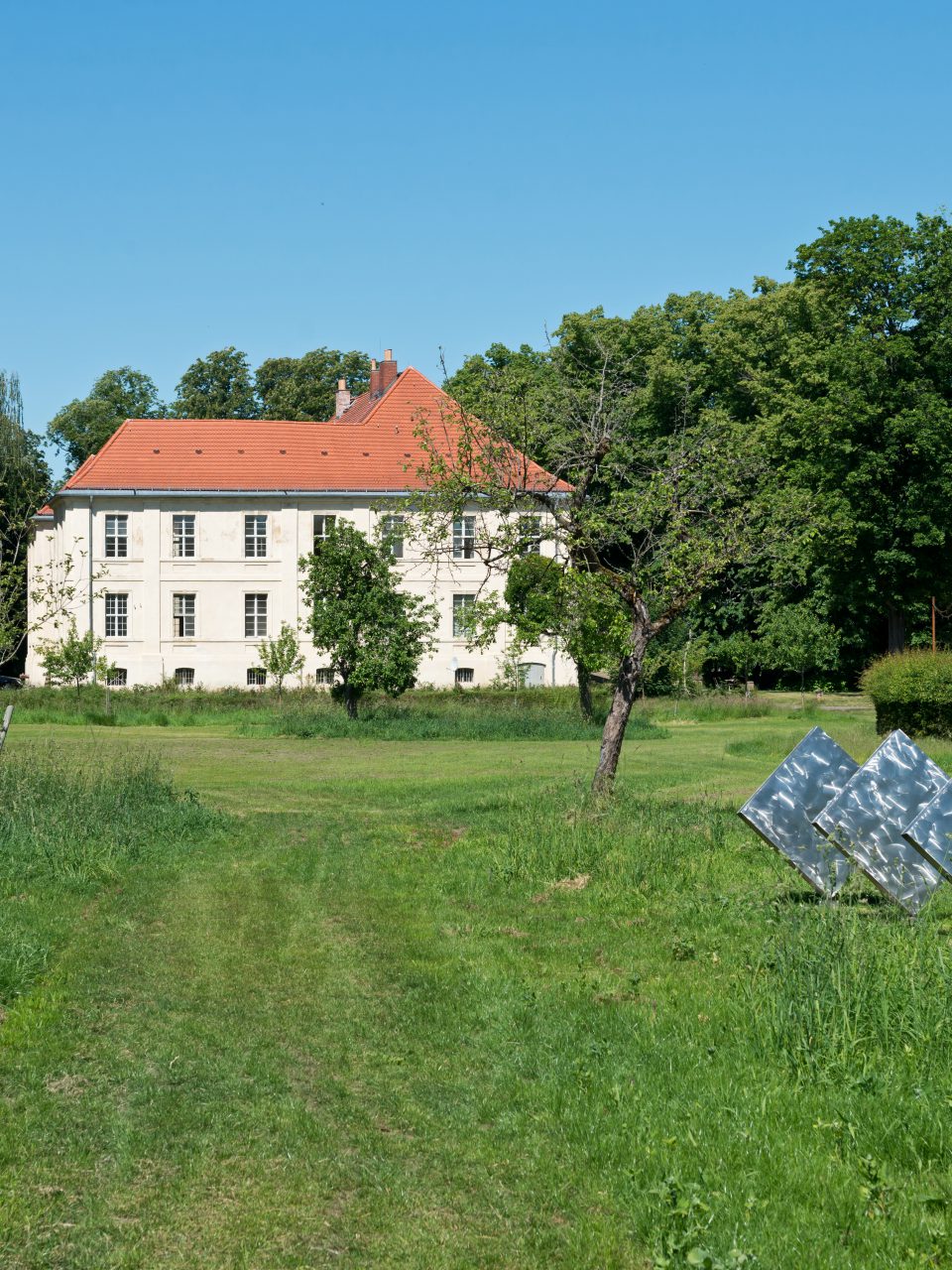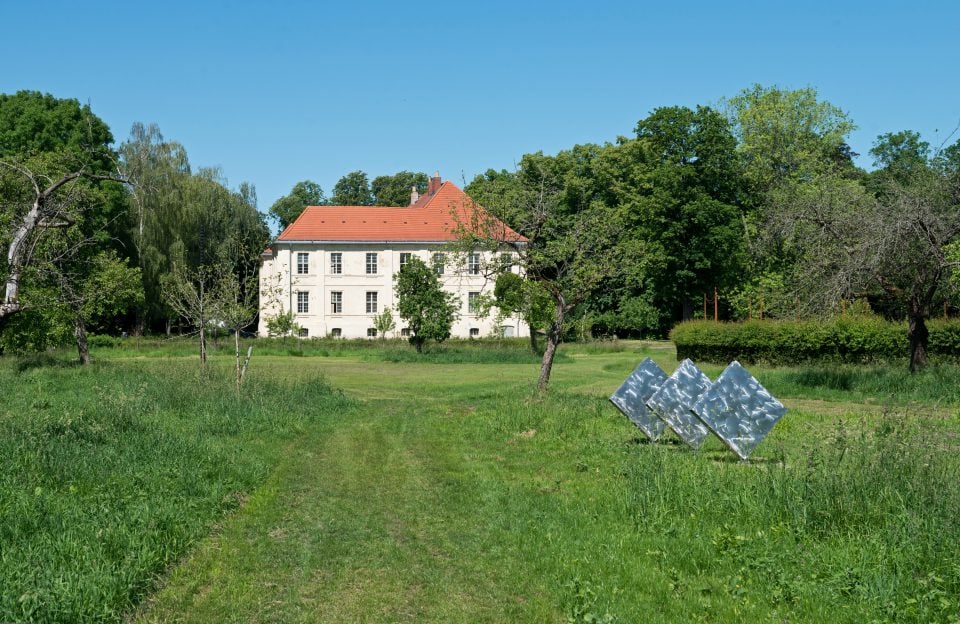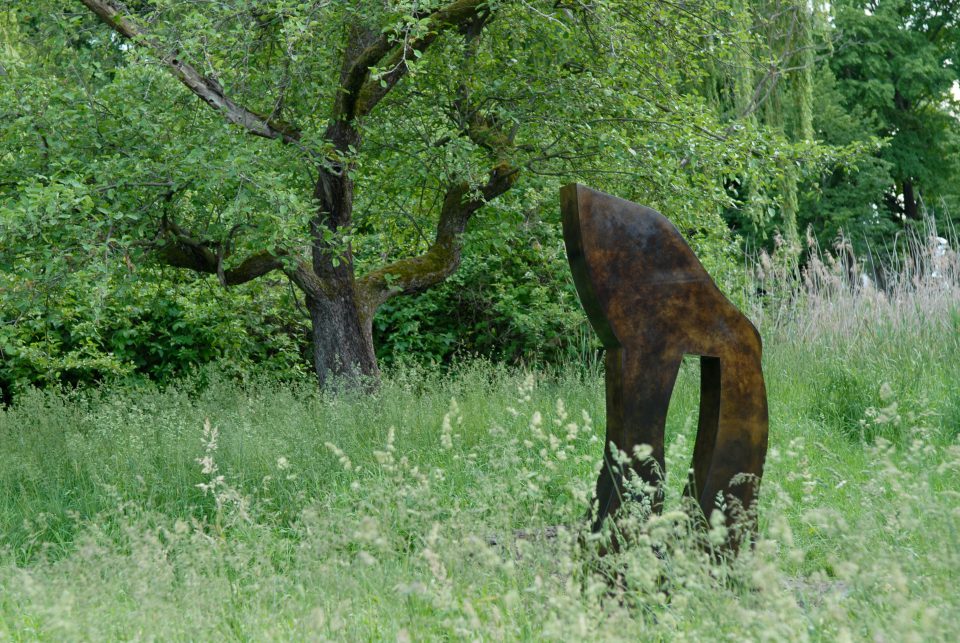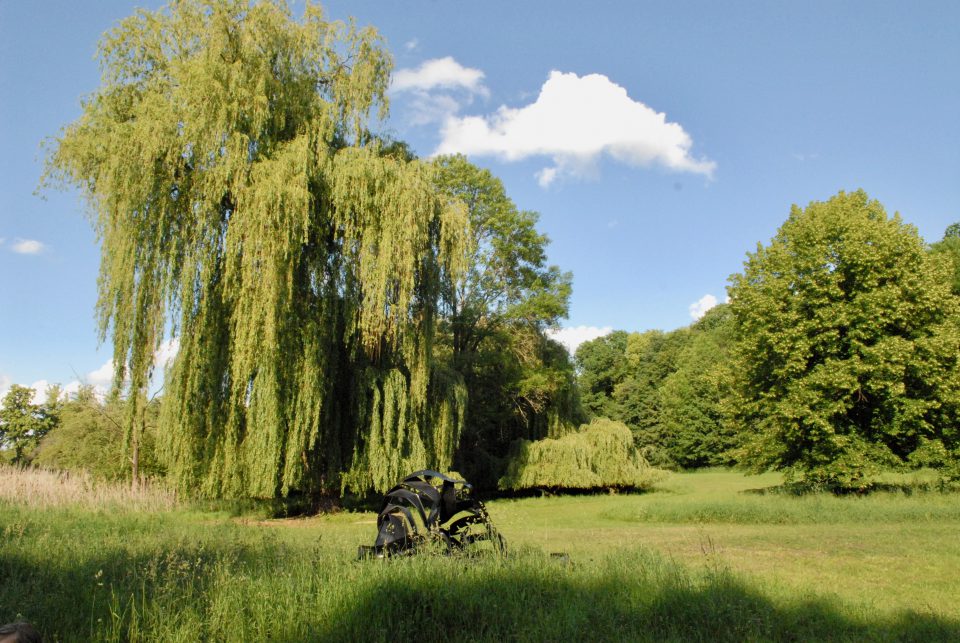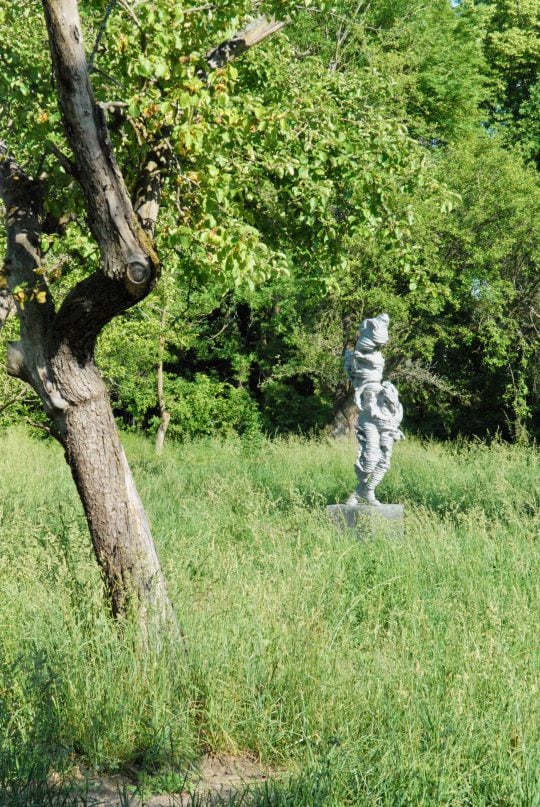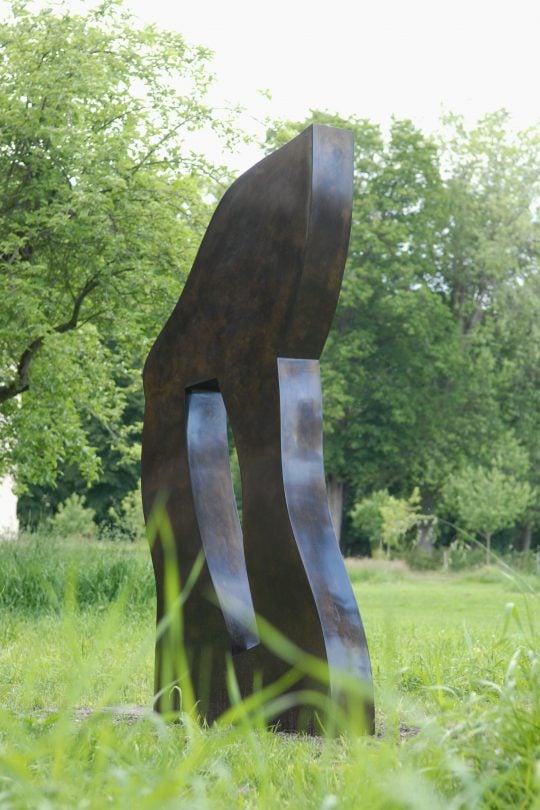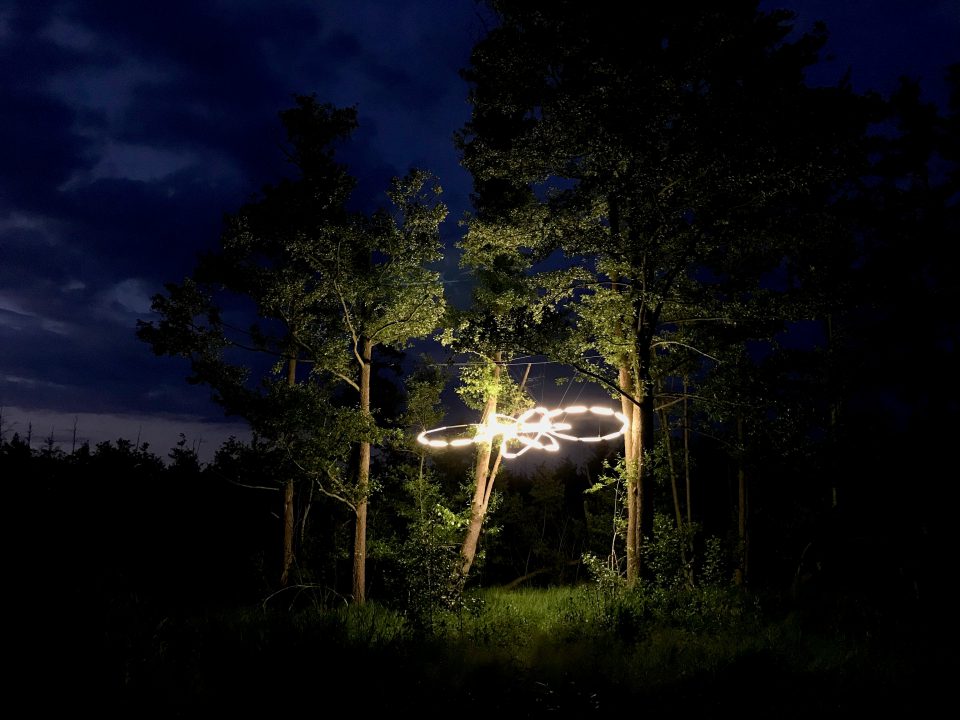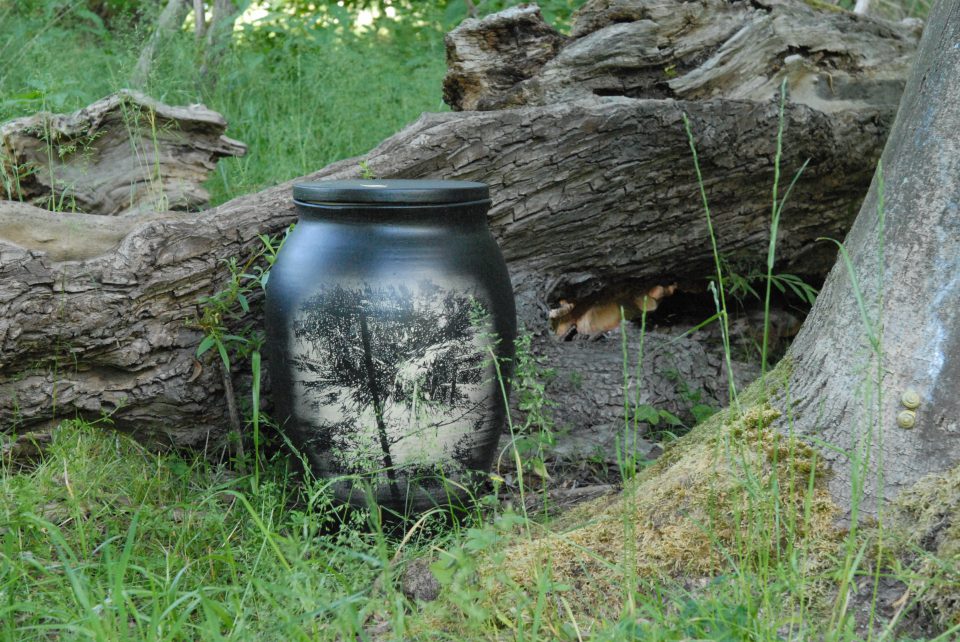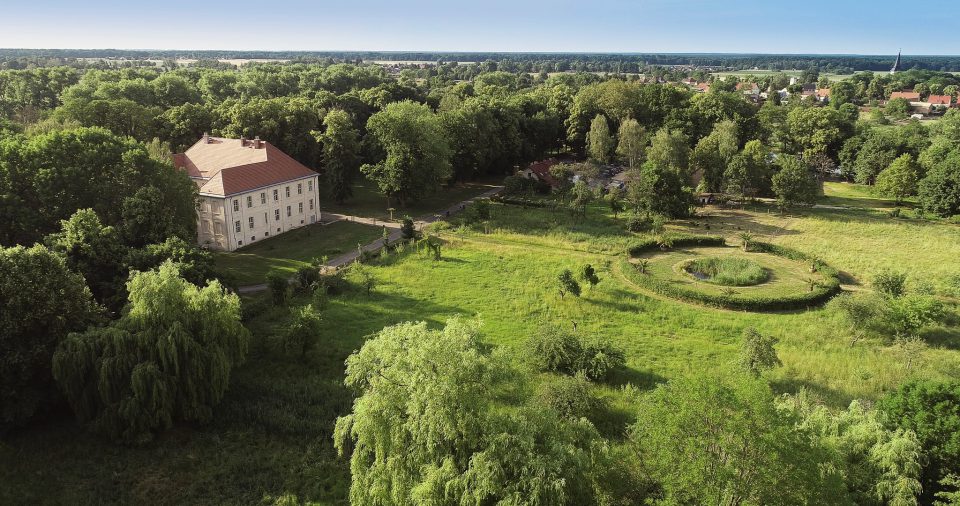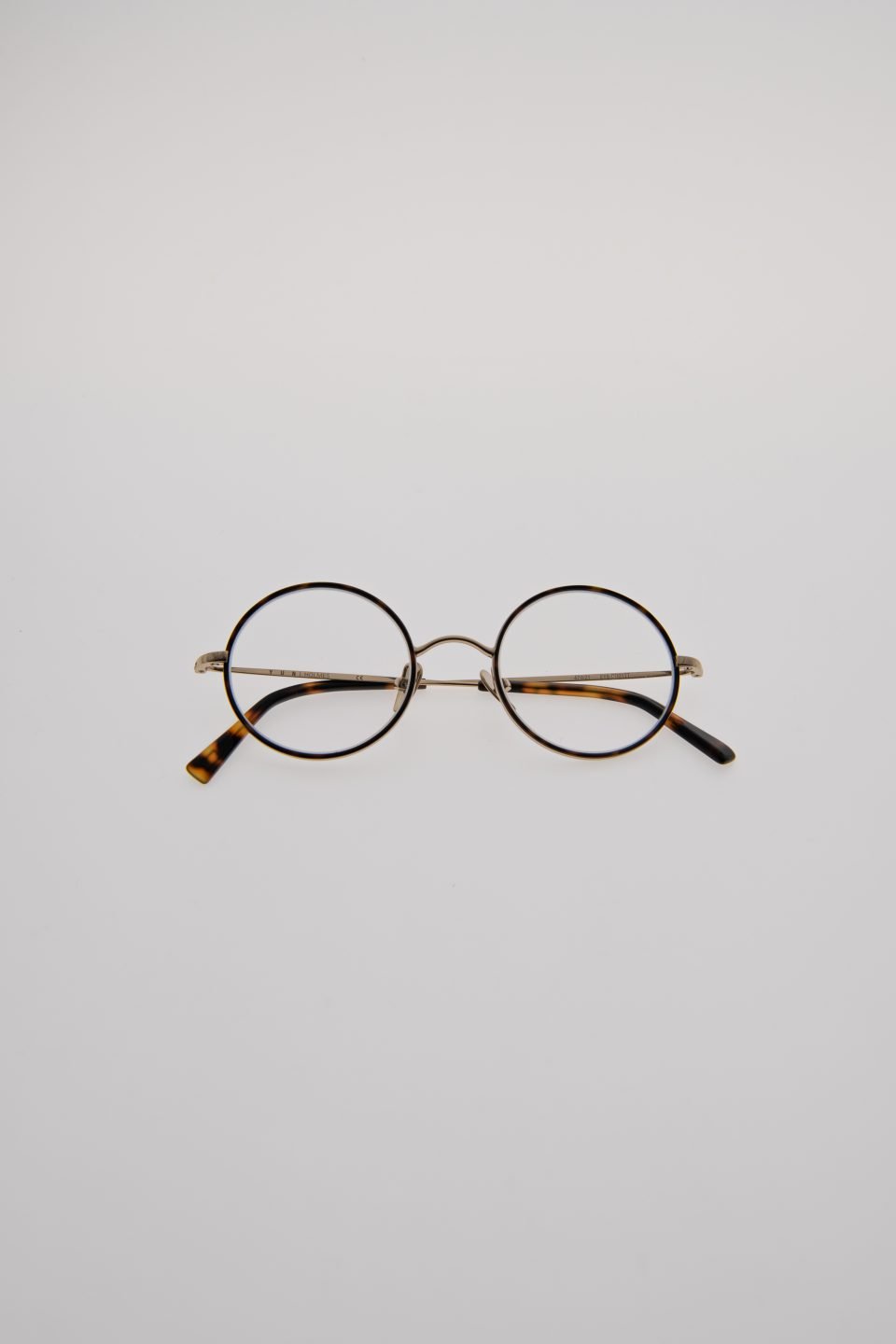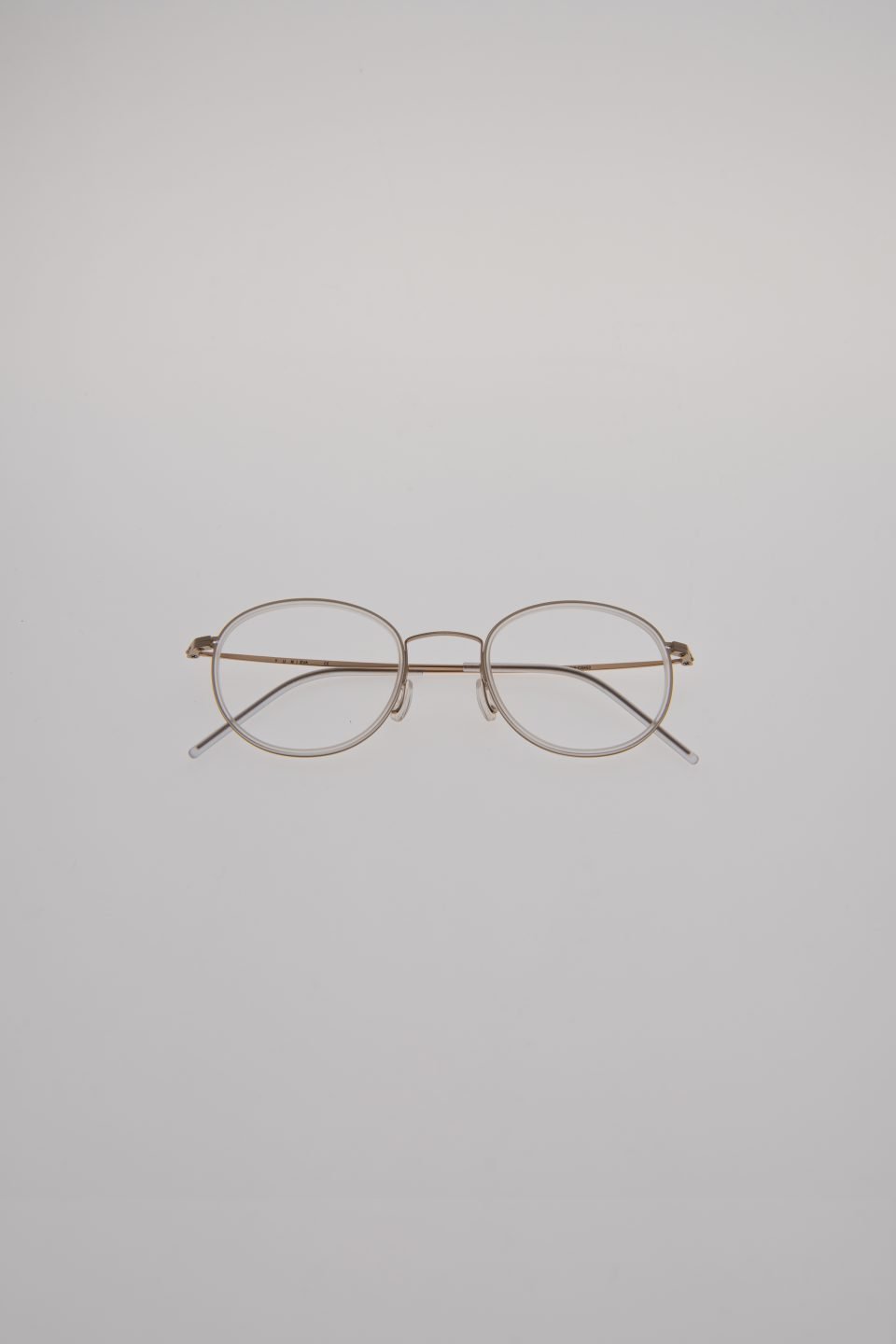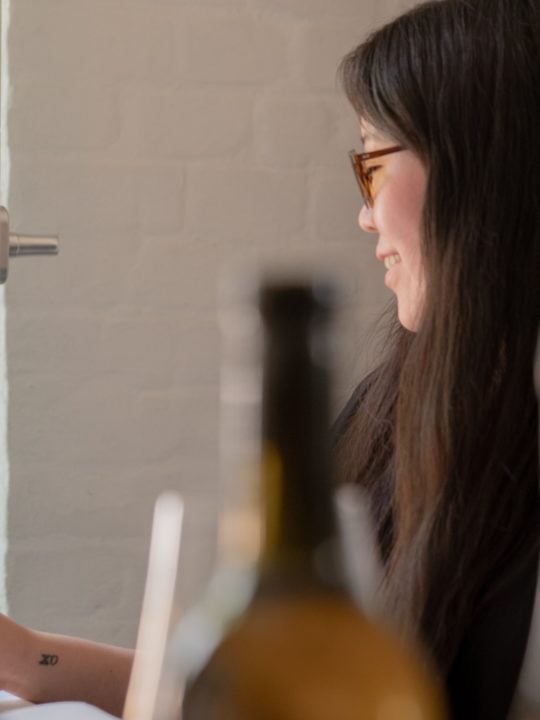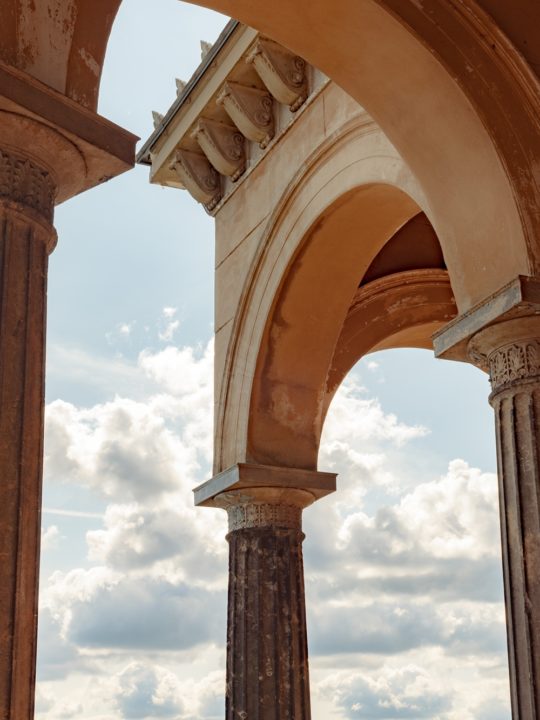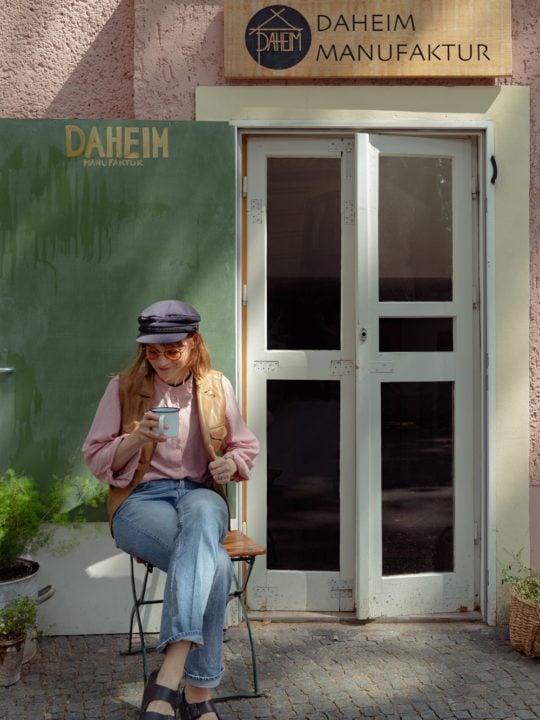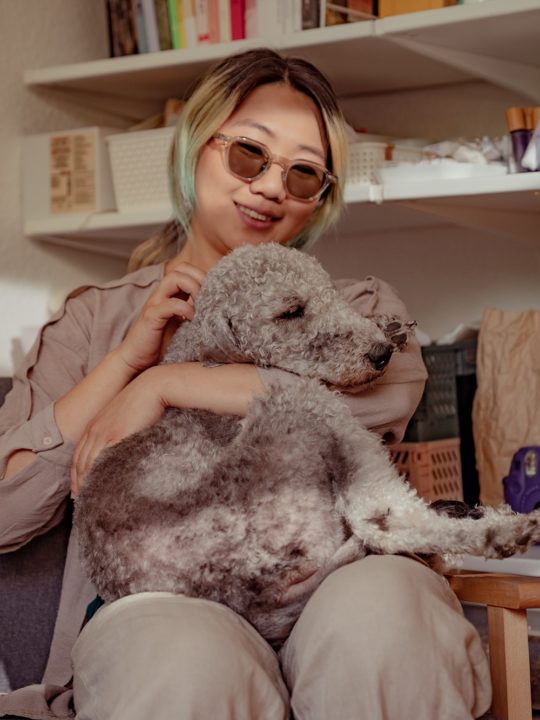A SCULPTURAL DIALOGUE BETWEEN ART AND NATURE
Culture writer Emily explores a new sculpture park just outside of Berlin.
(3 1/2 MINUTE READ)
At Schlossgut Schwante
A new sculpture park just outside Berlin in the Brandenburg countryside is a holistic escape from the troubled times we find ourselves in.
The traditional art gallery may be considered the epitome of an unnatural environment. Often casting art works against blank walls and encouraging visitors to assume a silent, contemplative demeanour, these “white cube” spaces are almost akin to sensory deprivation tanks, allowing paintings, sculptures, and installations to speak for themselves without the burden of context.
But is this the only way to experience art?
Apparently not. Situated on 10 hectares of land in the Brandenburg countryside and overlooked by the facade of an elegant 18th Century house, Schlossgut Schwante is a newly opened sculpture park just outside the German capital. The brainchild of Loretta Würtenberger and her partner Daniel Tümpel—a lawyer and economist respectively who have headed up a variety of artistic ventures—the park aims to offer its visitors a day-long holistic experience of artwork in a rural context, complete with a farm shop and restaurant to encourage you to linger longer in the idyllic setting. The inaugural exhibition at the venue showcases 25 pieces by international artists and aims to analyse the relationship between art and nature.
I visited the park on a sunny Sunday afternoon in mid-June. As I set off on my loop of the sculpture trail, map in hand, I am filled with a playful, childlike excitement as if heading off on a search for buried treasure. While many of the sculptures in the park themselves refer to the natural world—Hans Jean Arp’s Architektonische Skuptur (1958), for example, evidences how the artist sought to emulate the lines and forms of nature, and South Korean Lee Ufan’s Relatum-Position (2008) places a chalky white rock on a rusting iron pedestal—the first things I notice on my adventure are in fact the background noises of life in the countryside.
I hear birds singing, ponies grazing in a nearby enclosure, and twigs crunching underfoot as I wade through patches of tall grass to see harder to reach sculptures such as Clay Sentence (Ton Sentenz) by Isreali artist Yehudit Sasportas’.
Composed of a variety of dark brown pots, it is tucked away under the canopy of tree leaves. It’s a much more embodied way of seeing art than I’m used to, requiring me to crouch underneath branches and navigate through woodlands, and allowing me to feel the sun on my skin and the breeze in my hair in the process.
This alternative setting also invites viewers to interact with the sculptures differently.
In stark contrast to the glass cases and ropes many of us are accustomed to guarding precious artworks, at Schlossgut Schwante, visitors feel free to get up close and personal with the valuable objects on display. As I walk past Japanese artist Toshihiko Mitsuya’s The Aluminium Garden-Structural Study of Plants—a series of metallic renditions of plant life that sparkle in the light and rustle in the breeze—various passersby wistfully run their fingers through the synthetic flora, safe in the knowledge that there are no black-suited, stoney-faced security guards lurking over their shoulders. Other sculptures also seem to actively encourage interaction. The open door of American artist Dan Graham’s Play Pen for Play Pals (2018), for example, invites viewers to step inside it, slide the door behind them, and observe the park from the confines of a glass chamber. This act, for me, conjures recent memories of coronavirus quarantine, watching the city below from the safety of my balcony.
Opportunities to touch artwork are few and far between, and feel particularly important post-lockdown. After months of having our actions prohibited, it feels cathartic to be able to enjoy art freely in a tactile manner. This is not to say that all artwork should be made available to touch: many pieces that are exhibited in galleries are protected for a reason due to age and fragility. However, as the works at Schlossgut Schwante have to be robust enough to handle living out in the elements—Maria Loboda’s Sculpture in its Private Realm (2020) for example is positioned in the middle of a pool of water, and Carston Nicolai’s Echo (2020) has visible weather marks and scratches on its surface—it appears that a few tender touches from interested art-lovers are the least of these sculptures worries.
Not all of the artworks are within the visitors grasp, however. Pieces by the—arguably—most famous artists in the park are displayed at an unreachable distance, with renowned British creator Martin Creed’s Work No.1086 (2011) only visible from across a lake, and Ai Wei Wei’s Flag for Human Rights – Protect “Fly the Flag” (2018) situated on top of a towering flag pole. But even at a distance, these two works still pack a punch, feeling particularly relevant during testing times filled with a global pandemic, economic collapse, and overdue protests fighting for racial equality. “Everything will be alright,” says Creed’s light installation, the last artwork I see on the way out of the park. And while I may not quite believe it, seeing artworks such as this during my visit to Schlossgut Schwante did allow me to escape from the worries of the day… for an hour or two at least.
The exhibition will run until 31 October 2020.
- SCHLOSSGUT SCHWANTE
- –
- Schlossplatz 1-3
- 16727 Oberkrämer

